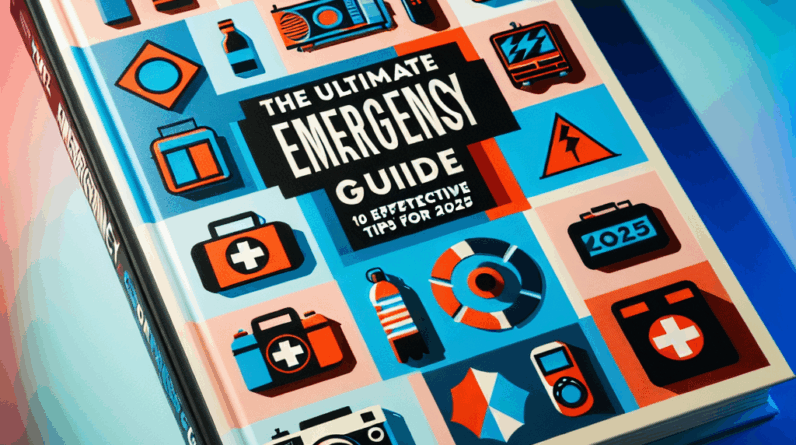Ensuring the continuity of essential services during disasters is a critical task that organizations must prioritize. Effective preparedness strategies can significantly mitigate risks, ensuring that both staff and clients stay safe and informed. Here’s a comprehensive guide on how to secure your essential services in times of crisis.
Risk Assessment and Planning
# Understanding Vulnerabilities
Securing essential services in a disaster begins with a thorough understanding of the vulnerabilities your organization might face. Initially, when I explored this topic, my approach was chaotic, but I quickly learned the importance of assessing both physical and human elements. Identifying potential problems and their impacts on your services is the first crucial step. Assemble a diverse team—engineers, IT experts, and customer service reps—to gain a well-rounded view of potential risks. Remember, vulnerabilities can also be procedural, such as gaps in communication protocols that can exacerbate crisis situations.
# Developing an Emergency Plan
Once risks are identified, it’s time to develop a robust emergency plan. My experiences taught me that effective implementation is key. Your plan should detail evacuation routes and communication methods during crises. Engage all stakeholders in this process through workshops to ensure comprehensive coverage of all critical areas and to foster a sense of ownership. Regularly revisit and update your emergency plan to keep it relevant and effective.
Training and Drills
Even the best plans are ineffective without proper training and regular drills. Ensuring your team practices emergency scenarios is crucial for an effective response. Regular training sessions should simulate real-life situations, and drills should be reviewed to refine and improve response strategies. Feedback plays a vital role in this process, helping to enhance skills and preparedness.
Communication Strategy
# Establish Clear Channels
Clear and effective communication is essential during emergencies. Establish and clarify communication channels, ensuring all team members are familiar with the protocols. Consider creating reference guides for quick access during high-pressure situations. Also, plan for customer communication to keep them informed without causing panic.
# Real-Time Updates
The ability to provide real-time updates during a disaster is invaluable. Utilize modern technology to keep the community informed through text messages or social media updates. Also, designate a spokesperson to ensure consistent and credible messaging.
# Post-Crisis Communication
Continuing communication after a crisis is crucial. Update all stakeholders about ongoing recovery efforts and future prevention measures. Transparency and openness in communication can build trust and aid in organizational improvement.
Resource Management
# Inventory of Resources
Effective resource management starts with a detailed inventory of available resources. Regular checks and strategic placement of resources can prevent chaos during emergencies. Planning and partnership with local agencies can greatly enhance your resource management strategy.
# Building Partnerships
Developing partnerships with local organizations and emergency services is crucial. These relationships provide support and resources during crises and contribute to effective community-wide disaster responses.
# Resource Allocation
Prioritizing resource allocation is essential for maintaining operations during a disaster. Regular feedback and adjustments to resource management strategies can improve preparedness and response capabilities.
Review and Improve
# Post-Incident Analysis
After a disaster, conducting a thorough review of the response is crucial. This analysis helps identify successful strategies and areas needing improvement. A culture of transparency and non-blame can facilitate learning and growth.
# Incorporating Feedback
Gathering and incorporating feedback from all stakeholders can unveil insights that internal reviews might miss. Use this feedback to refine and improve your disaster response plans.
# Continuous Improvement
Commitment to continuous improvement ensures that your organization remains prepared and can respond effectively to any future disasters. Regular updates to plans and training programs are essential for staying prepared.
FAQ
1. What should be included in an emergency plan?
An effective emergency plan includes detailed evacuation routes, communication strategies, and clearly defined roles and responsibilities. It should be regularly reviewed and updated.
2. How often should training drills be conducted?
Training drills should be conducted at least quarterly to ensure that all team members are familiar with emergency procedures and to integrate new staff effectively.
3. Why is communication important during a disaster?
Clear communication helps manage panic, provides essential instructions, and builds trust among employees and customers, ensuring overall safety.
4. How can I build partnerships for disaster management?
Building partnerships involves engaging with local emergency services and participating in community networks, which can provide essential support during disasters.
5. What is the benefit of conducting post-incident analysis?
Post-incident analysis is crucial for learning from past experiences, identifying successful strategies, and making necessary improvements to enhance future preparedness.




